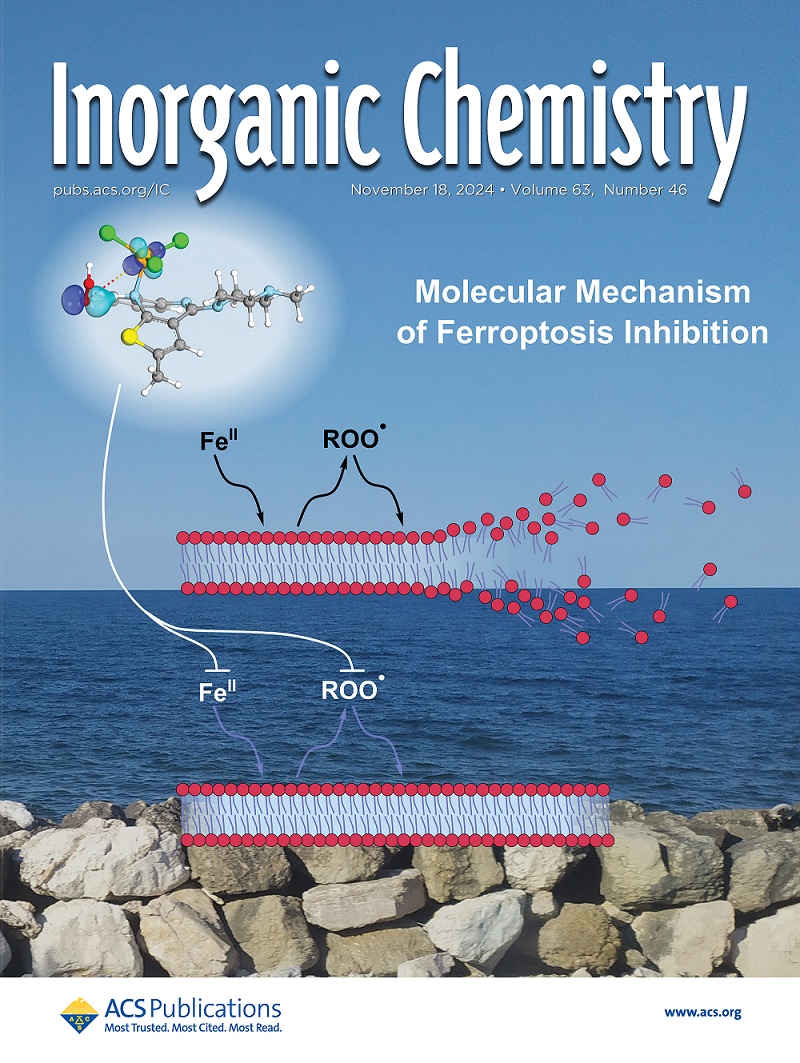Antimony and Bismuth Complexes as Visible Light Photosensitizers in Catalytic Oxidation Reactions.
IF 4.3
2区 化学
Q1 CHEMISTRY, INORGANIC & NUCLEAR
引用次数: 0
Abstract
The unique chemical reactivity offered by photochemistry has driven a growing interest in the design of new photocatalysts with diverse chemical properties. Incorporating heavy atoms into the core of chromophores presents an excellent opportunity to achieve this by enabling a long-lived excited state. Herein we report the design, synthesis, and characterization of new Sb- and Bi-based dipyrrins with a significantly increased stability in solution, improved luminescent properties, as well as their use in photocatalysis. Furthermore, the applicability of a new Sb-dipyrrin photosensitizer ArOMe-Sb-Br is highlighted in the oxidation of different functional groups, performing especially well in the oxidation of alkenes (TON up to 5500). In addition, the singlet oxygen efficiency was found to be ΦΔ= 0.76, a value as high as benchmark photosensitizers such as chlorophyll a and metalloporphyrins. We have performed further investigations using cyclic voltammetry under light irradiation with complementary density functional theory (DFT) calculations to elucidate the redox properties of our new set of heavy pnictogen dipyrrins. Despite the theoretical and experimental challenges, both cyclic voltammetry and DFT corroborate the formation of a cationic complex resulting from light-induced bromide dissociation. Our work paves the way for exciting new possibilities in light-driven applications using main-group elements.锑铋配合物在催化氧化反应中的可见光光敏剂作用。
光化学所提供的独特的化学反应性促使人们对设计具有不同化学性质的新型光催化剂越来越感兴趣。将重原子合并到发色团的核心中,通过实现长寿命的激发态,提供了实现这一目标的绝佳机会。本文报道了新型Sb基和bi基双吡啶的设计、合成和表征,它们在溶液中的稳定性显著提高,发光性能得到改善,并在光催化中得到了应用。此外,一种新的sb -双吡啶光敏剂ArOMe-Sb-Br在不同官能团的氧化中具有突出的适用性,在烯烃的氧化中表现得特别好(TON高达5500)。此外,发现单线态氧效率ΦΔ= 0.76,与叶绿素a和金属卟啉等基准光敏剂一样高。我们利用光照射下的循环伏安法和互补密度泛函理论(DFT)计算进行了进一步的研究,以阐明我们的新一组重烟原双吡啶的氧化还原特性。尽管存在理论和实验上的挑战,循环伏安法和DFT都证实了由光诱导的溴解离引起的阳离子配合物的形成。我们的工作为使用主群元素的光驱动应用铺平了令人兴奋的新可能性。
本文章由计算机程序翻译,如有差异,请以英文原文为准。
求助全文
约1分钟内获得全文
求助全文
来源期刊

Inorganic Chemistry
化学-无机化学与核化学
CiteScore
7.60
自引率
13.00%
发文量
1960
审稿时长
1.9 months
期刊介绍:
Inorganic Chemistry publishes fundamental studies in all phases of inorganic chemistry. Coverage includes experimental and theoretical reports on quantitative studies of structure and thermodynamics, kinetics, mechanisms of inorganic reactions, bioinorganic chemistry, and relevant aspects of organometallic chemistry, solid-state phenomena, and chemical bonding theory. Emphasis is placed on the synthesis, structure, thermodynamics, reactivity, spectroscopy, and bonding properties of significant new and known compounds.
 求助内容:
求助内容: 应助结果提醒方式:
应助结果提醒方式:


